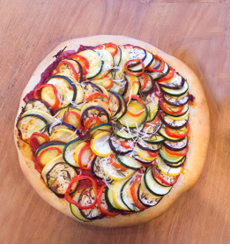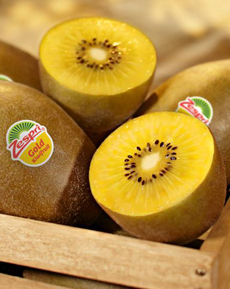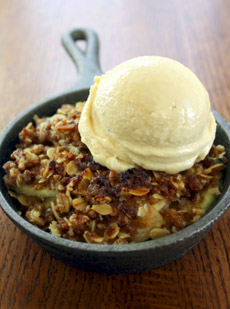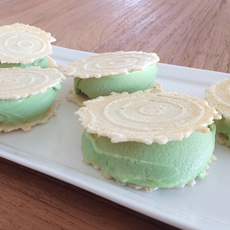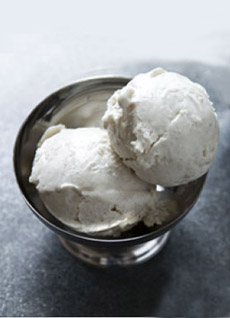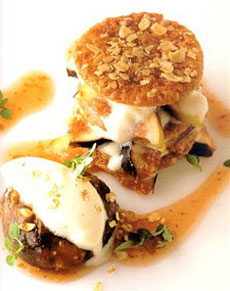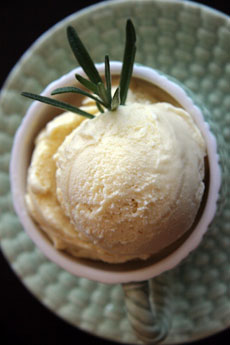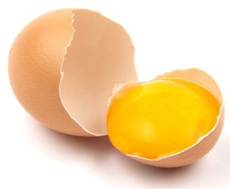|
Depending on where you reside, you may never have heard of a Cuban Sandwich, called a Cubano in Cuban restaurants. But August 23rd is National Cuban Sandwich Day, honoring a pressed hero-type sandwich that originated in Tampa and traveled to Miami and points beyond.
In fact, there’s a rivalry between the two cities over small details (check out this article on NPR.org).
Here’s a recipe. You can make it in a panini press, or with two skillets.
National Cuban Sandwich Day even has its own Facebook page, with many more photos and videos.
The annual Cuban Sandwich Festival in Ybor City attracts competitors from around the United States. This year’s winner is from London!
In 2015, participating restaurants joined forces to make a 105-foot-long Cuban Sandwich, the world’s longest. Alas, we could find no photo.
The history of the Cuban sandwich follows, along with the amusing tale of how it came to be.
> The history of the sandwich.
> The different types of sandwiches.
> The year’s 27 sandwich holidays.
> The year’s 20 bread holidays.
WHAT’S A CUBAN SANDWICH?
The original Cuban sandwich from the Ybor City district of Tampa, Florida is a type of hero sandwich made with glazed ham, shredded roast pork, Swiss cheese, Genoa salami, dill pickle chips and yellow mustard, on Cuban bread.
Cuban bread itself originated in Ybor City, most likely at La Joven Francesca bakery, established by a Sicilian-born baker in 1896 (it closed in 1973 and is now part of a museum). It’s a long, baguette-shaped loaf made with a bit of added fat (photo below).
The Beginning
The late 1800s. The Cuban sandwich we know today originated in Tampa, Florida in the late 1800s, in the now historic cigar-producing neighborhood of Ybor City. The neighborhood was populated by many Cuban immigrants, who came to work in the cigar industry, as well as German cigar workers and Italian laborers.
The early 1900s. The sandwich achieved popularity among workers in the district’s many cigar factories. One popular eatery, Columbia Restaurant in Ybor City, has been around since 1905. (It’s now an elegant restaurant, with a dolphin fountain in the courtyard.)
Ingredients
While it’s called “Cuban,” the sandwich has influences from other immigrant groups, particularly the German cigar workers and Italian bricklayers in the area.
Genoa salami was added by Italians, who found that placing a hot brick on top of the sandwich for a few minutes pressed it flat and made it taste better—warm and crusty. This led to the use of a cast iron grill press, still used today. At home, you can use a George Foreman grill or panini press (both are electric grill presses, with flat and ridged plates).
Mustard was a condiment preferred by the Germans. It also didn’t spoil in the Florida heat as mayonnaise could. Refrigeration was scarce in the early 20th century.
TAMPA VERSUS MIAMI
Tampa and Miami have an ongoing rivalry over the correct ingredients for a Cuban sandwich.
Miami avows that salami should never be used. Plus, Miami-style Cuban sandwiches can be spread with butter!
But there’s no doubt about the original ingredients.
In 2012, the Tampa City Council passed a resolution designating the “Historic Tampa Cuban Sandwich” as the “signature sandwich of the city of Tampa.”
The Council proclaimed that a traditional Tampa Cuban is to include Cuban bread, ham, mojo-spiced pork, Genoa salami, mustard, Swiss cheese, and three pickle chips.
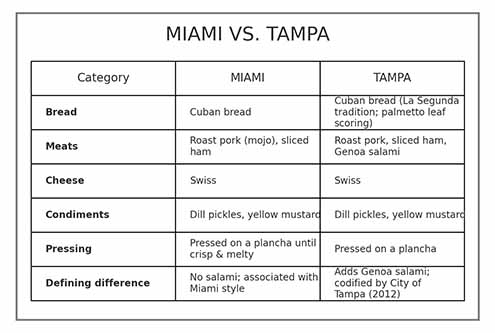
[8] Tampanians add Genoa salami to their Cubanos (A.I.-generated chart).
The Holiday Is Invented
National Cuban Sandwich Day was started by Christopher Spata, a Tampa Bay Times staff writer, as a hoax. On August 23, 2016 he declared “National Cuban Sandwich Day” as a tongue-in-cheek experiment to show how easily “national food days” can be fabricated.
He wrote a piece for the paper explaining that he picked August 23rd because it was already National Sponge Cake Day, drafted a press release, launched social pages and a hashtag, and submitted the “holiday” to calendar sites.
He proving that with “$12 and three hours” anyone could establish a holiday. (Editor’s Note: The holiday sites now charge significantly more.)
|
|
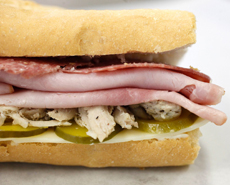
[1] The Cuban Sandwich: composed but not yet pressed (photo © National Cuban Sandwich Day | Facebook).
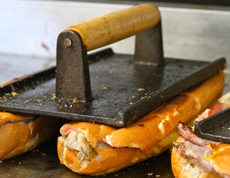
[2] The sandwiches are pressed under hot irons. You can use your George Foreman grill or a panini press (photo © Florida Girl Linda C | Flickr.
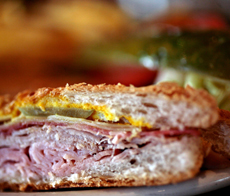
[3] The crust is now crunchy and the sandwich is ready to enjoy with a cold beer (photo courtesy Columbia Restaurant | Ybor City).
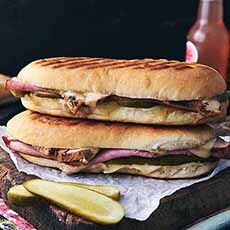
[4] At home, it’s easy to use a panini press (photo © King Arthur Flour).

[5] Cuban bread is a long loaf like a baguette but is doughier and without the crustiness of a French or Italian loaf. Here’s the recipe to bake it at home, from The Stay At Home Chef (photo © The Stay At Home Chef).

[6] The best Cuban Sandwich in the world (2015 winner) is from London’s Jama Cubana restaurant.
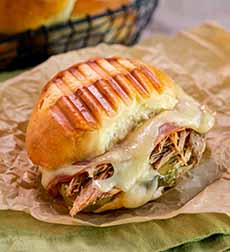
[7] The medianoche (“midnight”) sandwich is a smaller variation of the Cubano, popular late-night club fare. Here’s the recipe (photo © Hostess At Heart).
|
|
Worldwide Demand
By the 1970s, the Cuban Sandwich had spread to menus around the United States.
In 2015, the Cuban Sandwich Factory opened in Belfast, Ireland.
In 2016, the Tampa Cuban Sandwich Bar opened in Seoul, Korea.
In fact, London’s Jama Cubana restaurant won first place in The World’s Best Cuban Sandwich category at the 2016 Annual Cuban Sandwich Festival (held in Tampa on March 5th). It too is a newcomer, opened in 2015.
MEDIANOCHE, THE CUBAN SANDWICH SIBLING
Very similar to the Cuban Sandwich is the Medianoche (“midnight”), which originated in Cuba.
As the name suggests, this sandwich is popular late-night fare, served in Havana’s nightclubs. It contains the same ingredients as the Cuban Sandwich—ham, roast pork, Swiss cheese, mustard, and dill pickles.
However, it is smaller and uses a different bread: slightly sweet rolls made from an egg dough with a bit of sugar (similar to challah but a different shape).
Like the Cuban sandwich, the medianoche is typically warmed in a press.
So warm up the press: Wherever you live, today’s the day to enjoy a Cuban Sandwich.
And while you’re at it, there’s pan con lechón: Cuban roast pork with mojo*, pickles, and mustard, no ham or cheese.
Outside of Cuba, its closest relative is the Italian muffuletta sandwich, pressed Italian cold cuts and cheese on a sesame loaf. Different flavors, similar stacked/pressed sandwich preparation.
Both the Cubano and the muffuletta fall into that great category, the hero sandwich (also grinder, hoagie, submarine, etc.).
________________
*Cuban mojo (mojo criollo) is a garlicky citrus-based marinade/sauce, great for marinating pork (lechón asado) and chicken. It’s also used as a hot garlic-oil pour-over for vegetables or yuca con mojo (boiled cassava, often with sautéed onions)l. You’ll also see yuca frita (boiled then fried cassava sticks) and yuca con mojo served alongside lechón asado.
The marinade is made with sour orange juice (naranja agria), garlic, oregano, ground cumin, salt and pepper, and oil. Onion and bay leaf are options. Some cooks add a splash of vinegar.
Mojo recipe: If you want to make it but can’t access sour orange juice, add 1 part lime juice (e.g. 1/4 cup) to 2 parts orange juice (e.g. 1/2 cup). Then, warm 1/4 cup oil with 6 cloves minced garlic until just fragrant. Remove from the heat and add 1/2 sour orange juice or equivalent plus 1 teaspoon oregano, ½ teaspoon cumin, 1 teaspoon salt, and ½ teaspoon pepper.
Marinate pork, chicken for 2–4 hours, fish for 20–30 minutes. As a dressing, just heat and pour over hot vegetables or yuca with sautéed onions.
CHECK OUT WHAT’S HAPPENING ON OUR HOME PAGE, THENIBBLE.COM.
|
